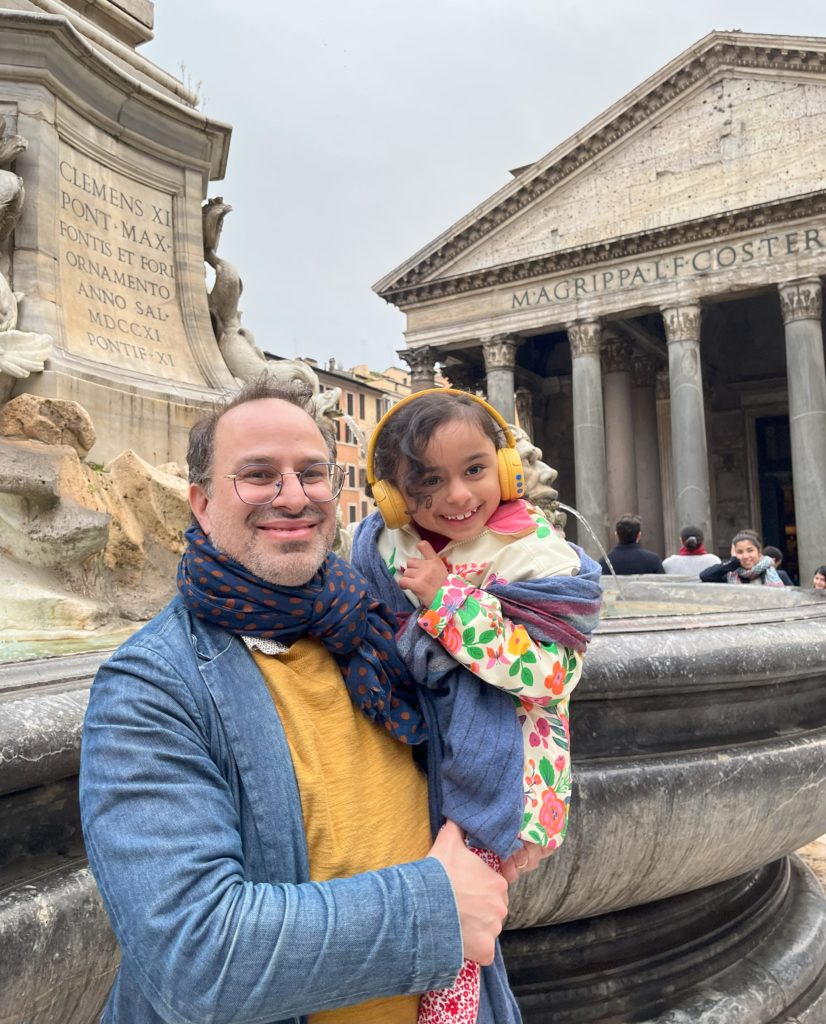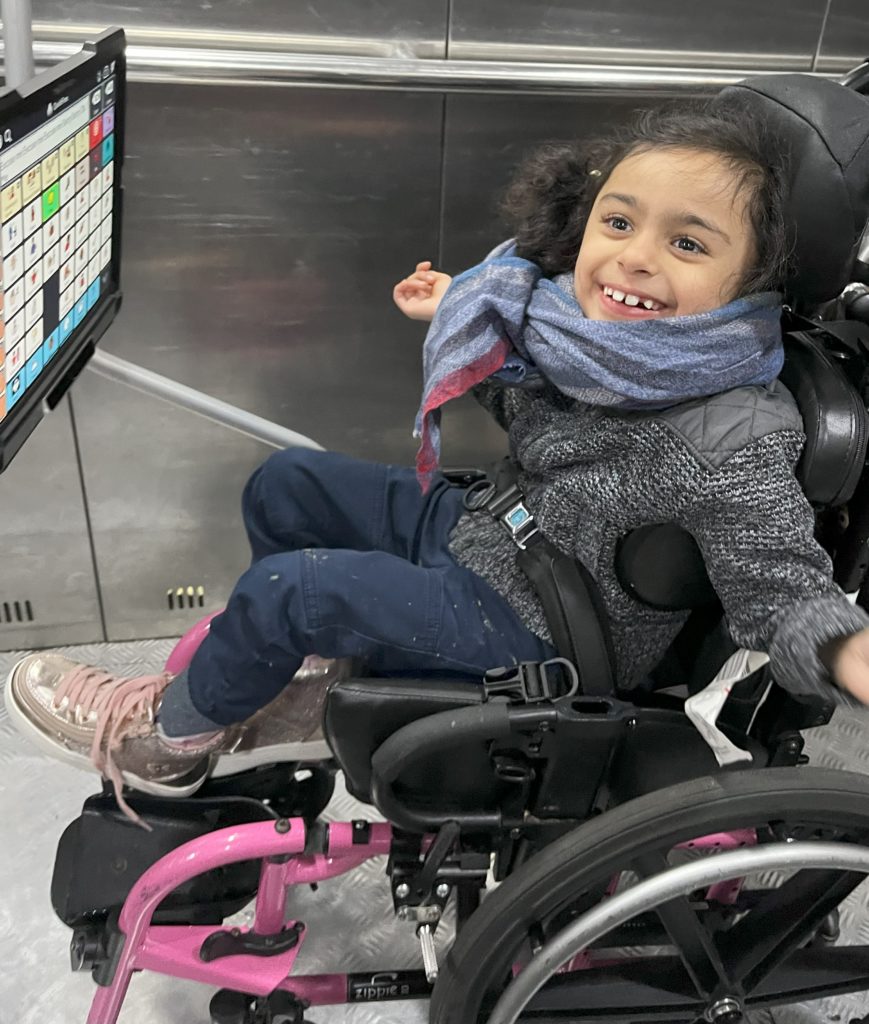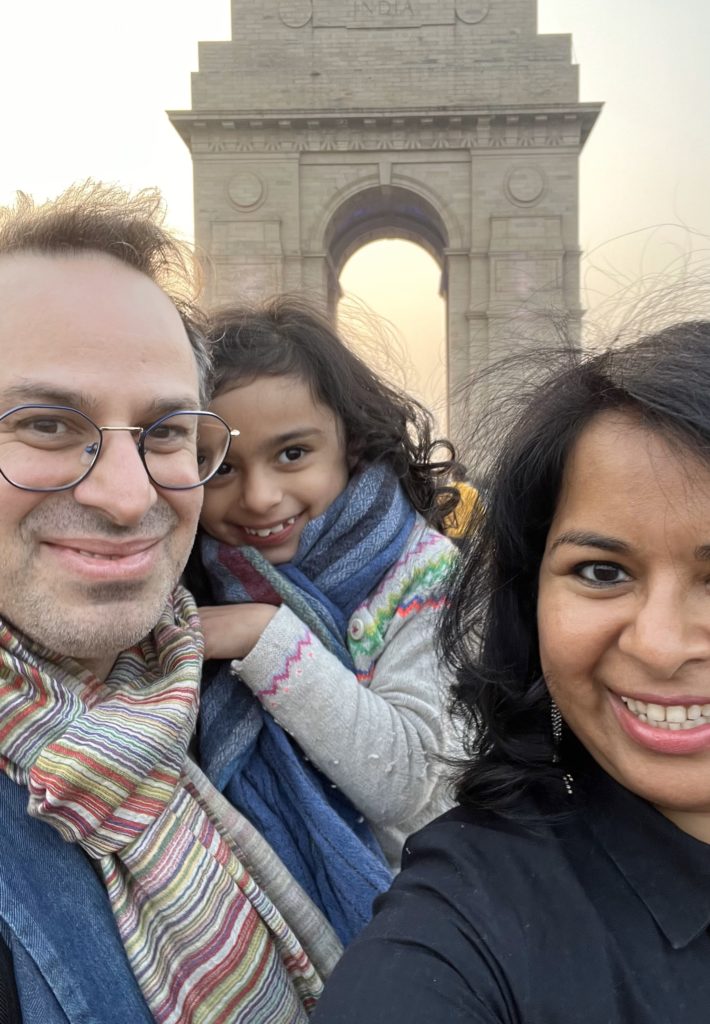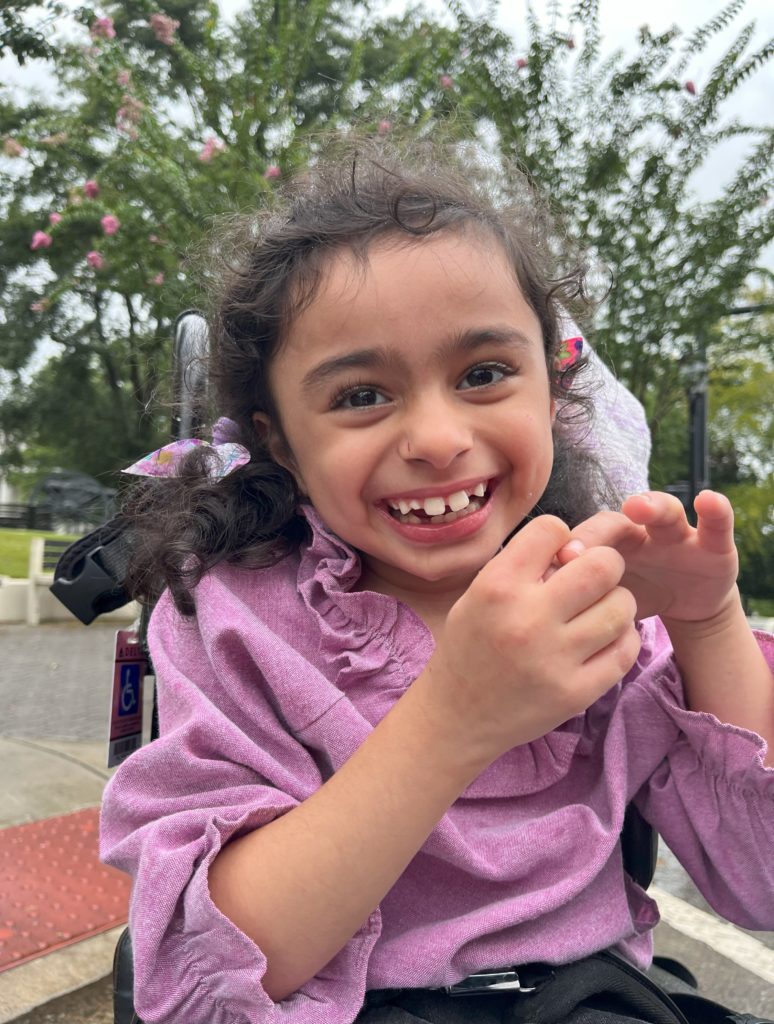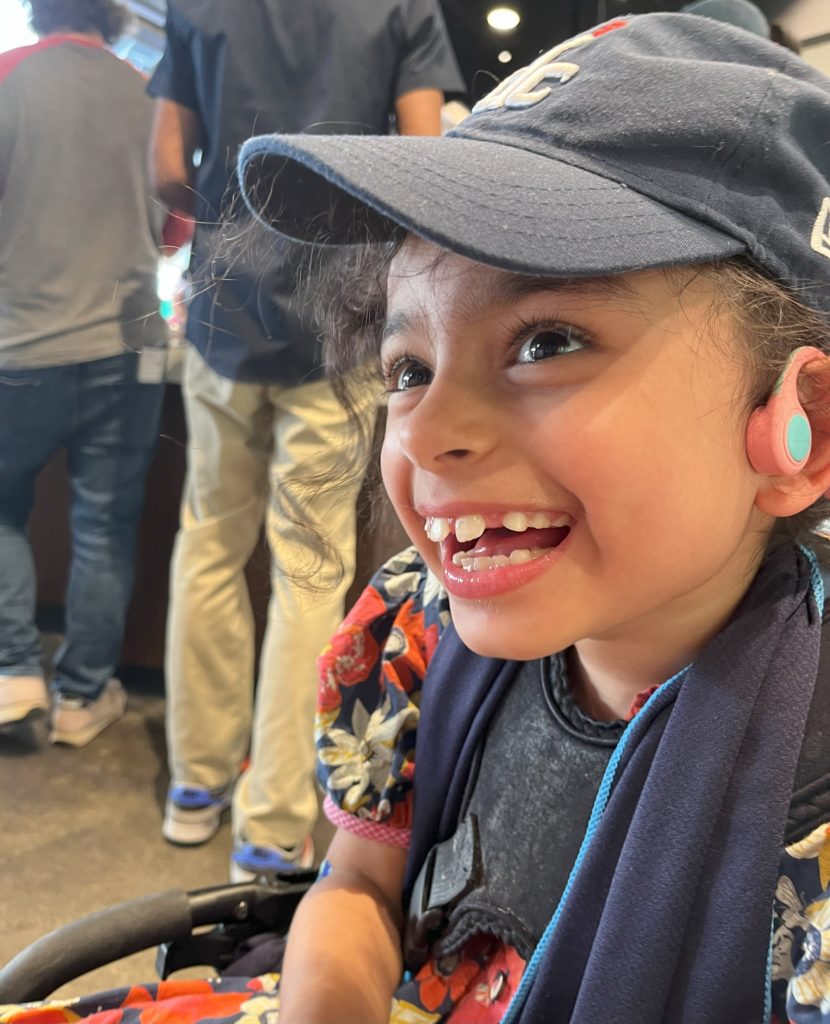By Usree Bhattacharya
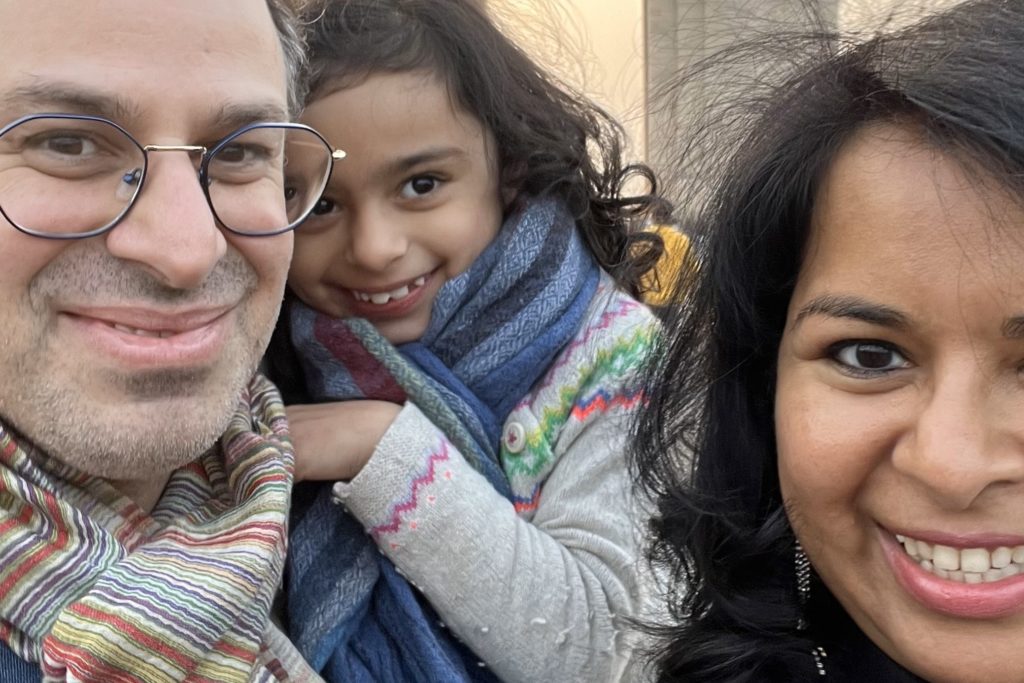
It is poignant to me that the only video I have of my little girl, Kalika, speaking by mouth is the one in which she repeats after me: “I. Love. You.” When I captured that moment with my phone many years ago, I had no idea that it would be the last time I’d capture her speaking in this manner. Shortly thereafter, around her second birthday, there were dramatic changes in her speech. Classic Rett syndrome “regression” set in, and her then growing vocabulary of 80+ words in both Bangla and English—words I had meticulously counted—started to fade away. While I grieved intensely during those months for what appeared to be slipping away, I never once doubted if we were still communicating. Kalika continued to reach and engage us powerfully in countless ways. We had extended conversations in multimodal ways, with her pressing into urgent service her mouth and hands and feet and eyes to express herself. Even when her voice no longer shaped into intelligible words, they carried emotion and meaning.
When she was 2.5 years old, we received the devastating diagnosis of Rett syndrome from an apathetic nurse practitioner, who informed us that Kalika would “never speak again.” We were also told that she would neither attend school nor go to college. I reeled in shock, struggling to grasp the notion that we had irrevocably lost our daughter’s voice and that her educational prospects were now uncertain. I remember vaguely learning about eye-tracking AAC (augmentative and alternative communication) devices soon after. These devices allow users to control a computer, and its speech software, using one’s eye movements. My husband Jonathan watched “An Actual Conversation With Maggie” on YouTube, starring a beautiful little girl with Rett syndrome communicating with her device, and told me about it. I could not bring myself to watch it. I didn’t want to accept that my daughter’s sweet, melodious voice would be lost forever. I also remember worrying that using an eye-tracking AAC device would take away the possibility of speech by mouth in the future. At that time, Kalika was still saying ten or so words, and I desperately hoped that she would speak more some day, despite contradictory evidence in the medical literature. It was only after a conversation with a wonderful friend Betty who is an expert in the field of speech language pathology, that I shifted my thinking. With compassion and kindness, she convinced me to give Kalika access to all ways of speaking. We would continue to encourage her to speak by mouth, but we would also get her started with eye-tracking AAC. My despair began to lift as I let in hope and possibility in my heart.
It was not until we went to a speech therapist, Mickey, recommended by our Rett syndrome specialist Dr. Daniel Tarquinio, that I saw the magic of AAC devices in action. Mickey had extensive experience with individuals with Rett syndrome. Kalika sat down in front of a device Mickey provided, and I was stunned that Kalika instinctively knew how to interact with it. After many long hours trialing different devices that day, we decided on a Tobii i-15, a somewhat cumbersome but effective device that Kalika responded well to. When we were exiting her office, Mickey looked us squarely in the eyes and said confidently: “I expect great things from your daughter.” It was so powerful to hear that; at that time, it meant everything.
Two months later, on Kalika’s third birthday (on Christmas Eve, 2018), we received the device. We opened the box, set it up, and minutes later, Kalika was playing games, and…talking again! Initially, we worked with a small pageset created specifically for her, containing short and fun videos, games, and words addressing basic functional needs. There were perhaps a dozen or so phrases. She mastered that quickly, and consequently, we moved her to more sophisticated software and more advanced pagesets. All of this has required years of training for us as a family, which continues to this day. In this process, we have benefited immensely from the expert support and training provided by the University of Georgia’s speech language pathology team, under the direction of our lead therapist Laura.
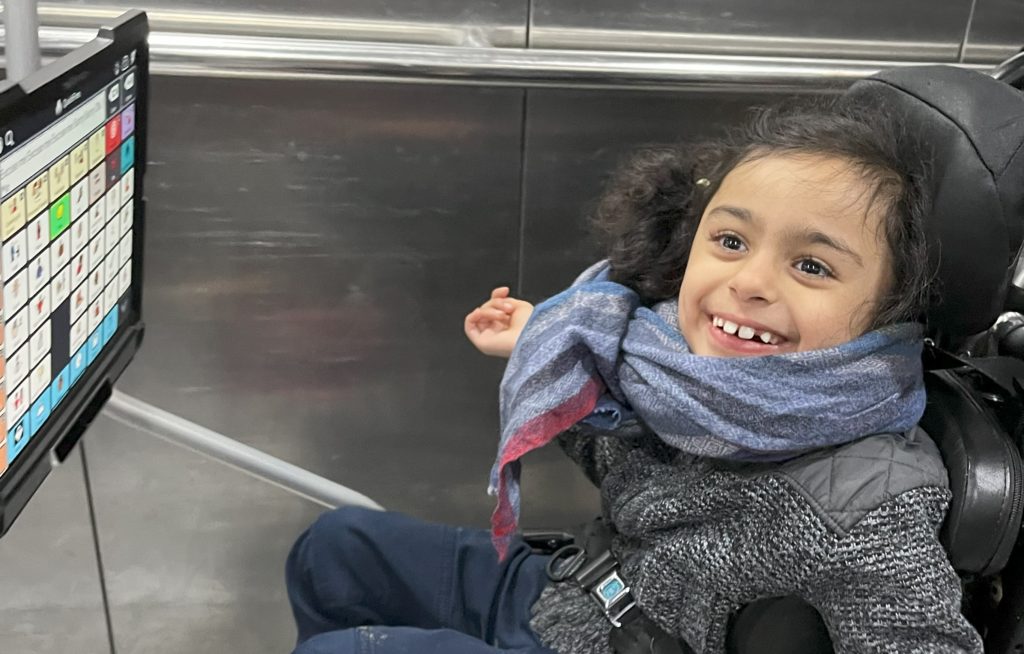
Soon after the device entered our home, I commenced research into Kalika’s AAC use. For me, as a professor in the area of language and literacy education at the University of Georgia, this multimodal communication system was fascinating from a professional perspective. In addition to celebrating Kalika’s ability to voice herself so powerfully on a daily basis as a mom, thus, I began exploring Kalika’s meaning-making in my research. I founded the Rett Lab@UGA in 2019, involving a highly motivated, interdisciplinary team of PhD, MA, and undergraduate students. I have directed and/or contributed to multiple studies in this area since then, including excavating the cognitive and linguistic aspects of Rett syndrome (Bhattacharya, 2019), challenging existing Rett syndrome metrics (Hou et al., 2020), and exploring multimodal speech (Bhattacharya & Pradana, 2022; Fabio et al., 2023). Particularly dear to me is research on how individuals with Rett syndrome advocate for their medical needs using AAC devices (e.g., Bhattacharya et al., 2023; Bhattacharya et al., 2022). This line of work was initially inspired by Kalika reliably describing and anticipating her seizures; informing us of illness and discomfort; and participating in eye exams, all by successfully navigating AAC speech. Other current projects explore Kalika’s biculturalism and multilingualism as it is mediated through her device. It is a privilege to explore Kalika’s speech in such profound ways in my professional life, even though it can be painful to be so constantly immersed in Rett syndrome.
To conclude, I am grateful every single day that Kalika has honored me by being my daughter. She fills my life with light and joy every moment, even in the throes of the worst that Rett syndrome brings. She’s seven now, and her device is so central to our lives that I cannot imagine her without it. She has a lot of personality, and she uses the device powerfully all day to express herself. We were at a wonderful weekend camp recently for children who use AAC devices and their families, and Kalika called me “stupid” and “mean” for not letting her watch her favorite show, Sesame Street. (Previously this year she mischievously spelled “FQ” on the device—laughing hard at my reaction—when denied the same show). She uses her music pages to boss around our Google Home, so that she can play her favorite Punjabi hip hop, American swing music, or contemporary French pop, among other genres on her carefully curated musical rotation. She can speak in her mother tongue, Bangla, to her grandparents, and enjoys saying ‘Ciao,’ a phrase she took particular delight in using during our visit to Italy. She is also thriving at school with the help of the device. The hundreds of words she speaks each day reminds me that such devices make the concept of “speech regression” (carrying a sense of finality) problematic in Rett syndrome. Her vocabulary, and indeed her speech, has grown unbelievably; her speech was not, in fact, “lost.” Another reminder to treat labels in this dreaded disease with caution, and understand that there are complexities. Significantly, it is not “just” her speech that this device facilitates. Her eye gaze paintings, using the same device, have won the first prize in her school district in science, made the cover of a poetry book, and sold in the first minute of a local children’s art exhibition. She also uses the device to read the news on an app and to play her beloved games. It thus opens up her world in many powerful ways.
I still cry when I watch that video of Kalika speaking by mouth, but I hold on even more dearly to the fact that her “I love you’s” never actually need to be said. They are and were always best experienced. These days, Kalika says “I love you” again to me, if I am lucky, several times a day using her device. It is a beautiful bonus and a blessing that the eye-tracking speech device allows me to hear those words again from her.
